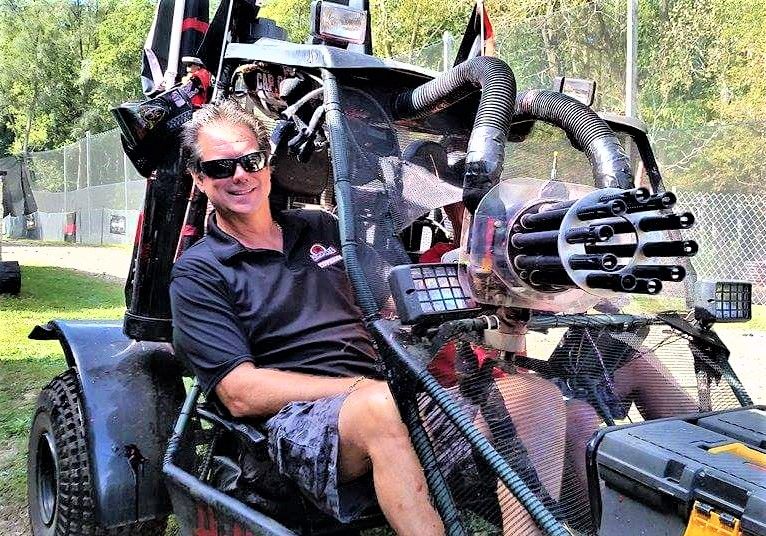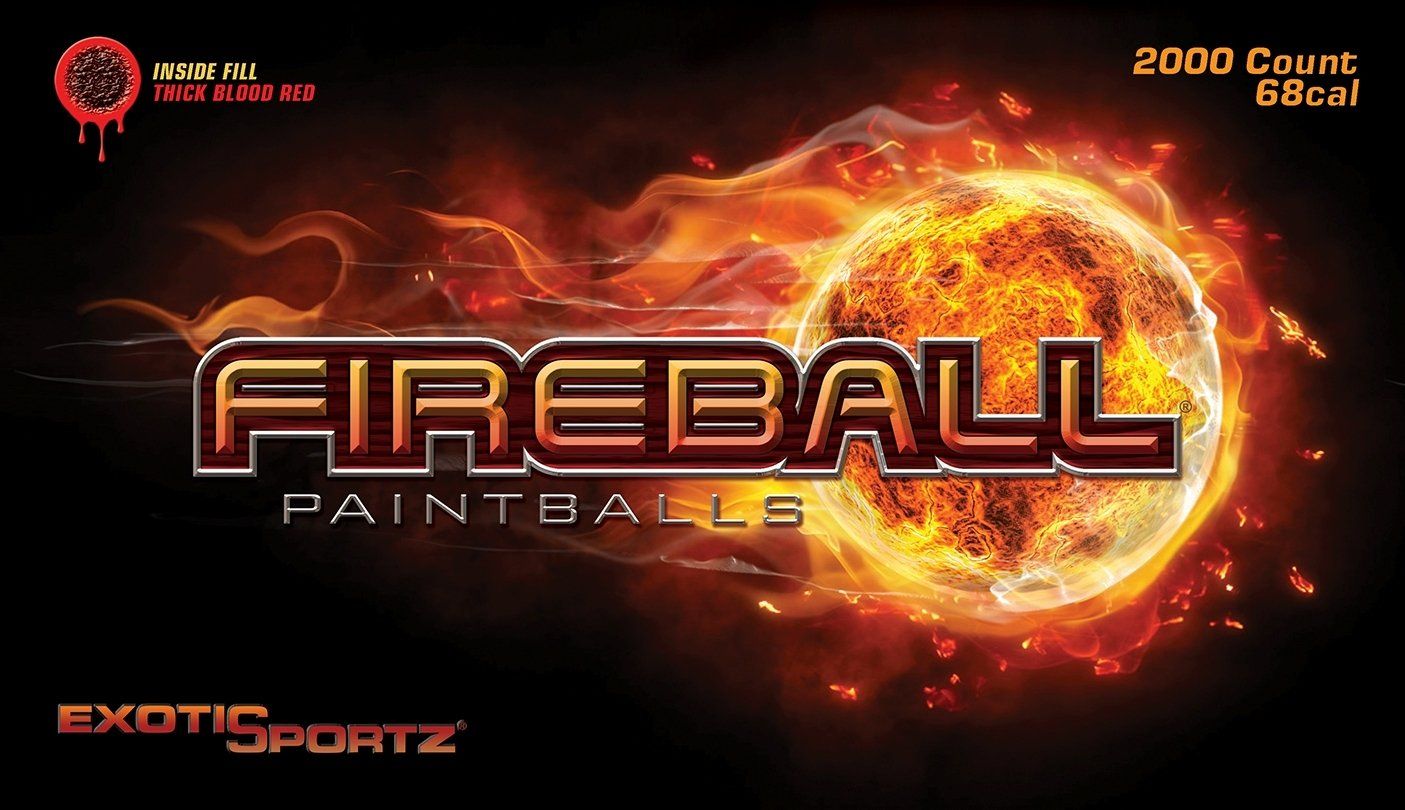
Office/Booking Help Phone Number: (734) 878-5656
Sports Store Phone Number: (734) 878-2002
ABOUT
All About Paintball
This page is to help you learn all about the sport of Paintball! Here you can get an overview of the game, and tips and tricks for becoming a force to be reckoned with!



Overview
The Game of Paintball
Paintball began in 1981 with 12 competitors playing capture the flag with air-powered pistols. Since then, the game has exploded into a multi-million dollar sport with amateur and professional tournaments across the United States and in Europe, offering cash purses and prizes in the hundreds of thousands of dollars. Daisy (manufacturer of pellets, BB's. and air guns), Crossman (manufacturer of air guns), Scott USA (manufacturer of ski poles and goggles) and JT USA (manufacturer of motor-cross safety equipment) are just a few of the companies that have expanded into the paintball world. Today, tournaments are sponsored by companies such as Budweiser and Pepsi-Cola.
Playing The Game
What is paintball? Well, combine the game of capture the flag with chess, mix in hide 'n' seek and add a large dose of adrenaline. Paintball is challenging and fast-paced. As few as two or as many as eighty can play. The basic game has two teams, each with it's own flag station and matching color armbands. Each team starts at its own flag station. A starting signal is given and each team tries to reach the other team's station, grab the flag and race back to its station. When a player gets tagged/hit by a paintball, he/she is out of the game. If a player is carrying a flag when tagged, he/she must drop the flag at that spot, then leave the game.
Equipment
Paintball Equipment
The basic equipment needed for play is: paintball safety goggles and face mask, barrel blocking device, proper clothing (camouflage jacket and pants, old fatigues or plain old blue jeans and a jacket), extra paint tubes with paintballs and the desire to have a great time.
Paintball Guns
The guns of the paintball world vary from the basic pump pistol to the high-tech semi-automatic, or to the full auto paintball gun.
Pumps - Pump-action guns have a manual pump mechanism that loads the paintball into the gun. The player must pump / load after every shot.
Semi Automatics - Semi automatic guns have a paintball loaded into the gun automatically after the gun fires. The gun can shoot paint as fast as the player can pull the trigger.
Full-Auto - Full-automatic guns also have a paintball loaded into the gun automatically after the gun fires. These guns can shoot multiple paintballs by holding down on the trigger.
Tanks & Specialty Equipment - These are only featured at some Big Games and Scenario Games. They usually have at least one automatic paintball gun mounted on them. The "Hell Hound" built by Tippmann Pneumatics and formally owned by Hell Survivors®. The "Hell Hound" features a 10-Barrel Gatlin Gun that can fire at a rate of 3000-rpm. It also sports a foot lever operated Grenade Launching System that can launch multiple 'squad buster' grenades over head while running the gun at the same time.
How a Paintball gun Works
Paintball guns use gas pressure from an tank or 12-gram cartridges to fire a paintball. This gas can be CO2 or nitrogen depending on the facility and type of gun. (Nitrogen is the favored propellant based on all-weather performance). The velocity of the paintball leaving the barrel is anywhere from 200 to 300 feet per second (fps), depending on the caliber. The maximum allowed is 300 fps on most recreational playing fields. Air and nitrogen tanks come in different sizes. The bigger the tank the longer you can play before requiring a refill.
Feeder
Paintballs drop one at a time from the refillable bulk feeder into the paintball gun.
AIR Tank
Air tank is pressurized to 3000-psi and regulated down to about 800 psi. Air leaves the tank through a valve into the air line.
Air Line
Air travels up the line and into the chamber.
Trigger
Pulling the trigger activates the hammer. The hammer slides forward, pulling the bolt over the exhaust valve forward to the chamber. Air shoots out the chamber, through the exhaust valve and through the bolt.
Barrel
The released air leaves the bolt, forcing the paintball out of the barrel.
The Paintball
Paintballs are not made of paint. they are soft gelatin capsules (the same gelatin as in Jell-O) containing a mixture of vegetable oil and food color. They are nontoxic and biodegradable. Paintballs are encapsulated by the same machines that make bath beads and vitamin capsules. R.P. Scherer, the worlds largest encapsulation company, was the first company to produce paintballs. Today there are many facilities in North America and Europe dedicated to manufacturing paintballs. Billions & billions of paintballs are produced each year in Asia, Europe and North America.
Velocity Checks
To check the velocity at which a paintball gun is firing, a chronograph or radar is used. The radar/chronograph uses small Doppler radar to measure the velocity of a paintball. The paintball is fired over the machine then the radar picks up its speed on a digital display. If a gun is firing paintballs at over 289 fps for 68-cal or 219 fps for 50-Cal, it is adjusted to lower the velocity. The first chronographs used light. The paintball was fired over the machine. Light entering the machine was broken, starting a timer. The machine measured the time the light was broken and calculated the velocity of the paintball. We now use Radar Machines.
Playing Fields
Playing fields vary in terrain and management. Some fields have fixed stations and play areas for simple operation. Others rotate stations or change play direction every three months. If a field lacks vegetation, owners may use old tires, wood pallets and plywood to create forts, bunkers and other places for players to hide. A good field will provide a day of excitement, challenges and fun.
Bunkers
Bunkers are man-made structures on or in the ground. these are highly defend-able positions used as stepping-stones for advancing or retreating.
Boundaries
Each field has well defined boundaries marked by netting, colored tape or ribbon.Players must stay within the boundaries.
Limited Time
Games usually have a time limit of 20 minutes. this speeds the action and prevents a game from dragging on for hours.
Referees
Referees are on the field during the game. They check players to determine if they have been tagged. Refs can and will remove players who violate safety rules. (Remember: Never Remove Your Goggles on Field!)
Tagged
A player raises his/her hand to show that the have been hit then proceeds to a 'dead-zone'. Tagged players cannot talk or signal to other players on the field.
Tournament Games
Tournaments have two, three, five, seven and ten person team categories. Ten and seven person teams play the basic capture-the-flag game. Some tournaments play a variation known as center flag. The smaller teams are generally elimination in a smaller 'arena' type field. Points are given for flag capture, flag hang, number of opponents tagged and for winning a set.

FILL YOUR OWN HPA TANKS IN THE WORLDS LARGEST WALK-IN SELFSERVE FILL STATION!
Be sure to follow all DOT Guidelines and Fill Instructions.
WEAR FULL CLOTHING:
Even in hot weather. The paintballs will lose a lot of sting when hitting clothing compared to bare skin. Loose clothing absorbs the shock better. Removable layers work best, that way you can take some clothing off as the day gets warmer.
WEAR OLD CLOTHING:
The darker the clothing the better. The paint will wash out, however your clothing could get ripped or torn depending how you play. Camouflage is the best choice among paintballers.
LARGE POCKETS:
Extra large pockets on clothing are good for carrying spare ammo and grenades. We can sell or rent you an inexpensive pouch if you decide you need it.
WEAR BOOTS OR HI-TOP SHOES:
This will provide better ankle support. Also, expect muddy and wet areas on the playfield, so be prepared that slippery conditions could be possible.
IT IS ADVISED THAT YOU SHOW UP EARLY TO BE ON TIME:
This will enable you to have a chance to practice with your gun. Knowing your equipment is a valuable advantage. Also, you may want to walk the playfield to become familiar with the area. Showing up late or last minute could cost you to miss the first game.
WE WILL GIVE ORIENTATION ON SAFETY, GAME & EQUIPMENT RULES BEFORE PLAY: WATCH IT HERE:
Please pay close attention! Ask any and all questions before the play starts and you head out onto the playfield. You do not want to be removed from play for not knowing the safety rules.
TRY TO KEEP YOUR GUN OUT OF WATER AND DIRT:
It will work better if you do. Also, between games, clean the barrel out with a squeegee, which is provided in the target/radar range , or you may purchase your own to have on the playfield.
DON'T JAM YOUR FEEDER WITH PAINTBALLS:
This will cause breakage of the balls and malfunctioning of the gun. Breakage will also occur from picking up old paintballs from the ground. Never pick up paintballs off the ground.
BETWEEN GAMES, GET READY FOR THE NEXT ONE:
Nothing is worse than not being ready when the game starts. Reload your gun, squeegee out your barrel, refill your tank if needed, clean up your goggles and be sure to wipe all paint from yourself and your equipment. You may end up missing out on the next game if you're not ready to go when the referees start moving you out..
DON'T LEAVE YOUR EQUIPMENT UNATTENDED:
YOU ARE RESPONSIBLE FOR ALL YOUR RENTAL EQUIPMENT! Bring a padlock with you, we offer free lockers to put your stuff in.
BRING MOSQUITO SPRAY WITH YOU:
You will be in the woods. Don’t spray your goggles with this, it will destroy the lenses.
LAST AND MOST IMPORTATNT! WE ARE A FIELD PAINT ONLY (FPO) FACILITY:
You MUST Purchase all paintballs, grenades & paint mines @ Hell Survivors Playfield!
NO PETS OR ANIMALS ALLOWED ON THE PREMISIS.
Any "Service Animals' will need valid 'Service Training Certification' an an official 'Service Animal Harness' (No Exceptions).
LOCATION
619 Pearl St Pinckney, MI
FINE PRINT:
Prices and dates subject to change without notice.
No Rain-checks, Refunds or Exchanges. We Play Rain or Shine!
KEEP IN TOUCH
Physical Address:
619 Pearl St. (D-19)
Pinckney, MI 48169
We are the Red Gate with Hell Survivors sign!
Mailing Address:
PO Box 217
1325 E M 36
Pinckney, MI 48169
© Copyright 2023 Hell Survivors a division of Global Franchise Development Corp.